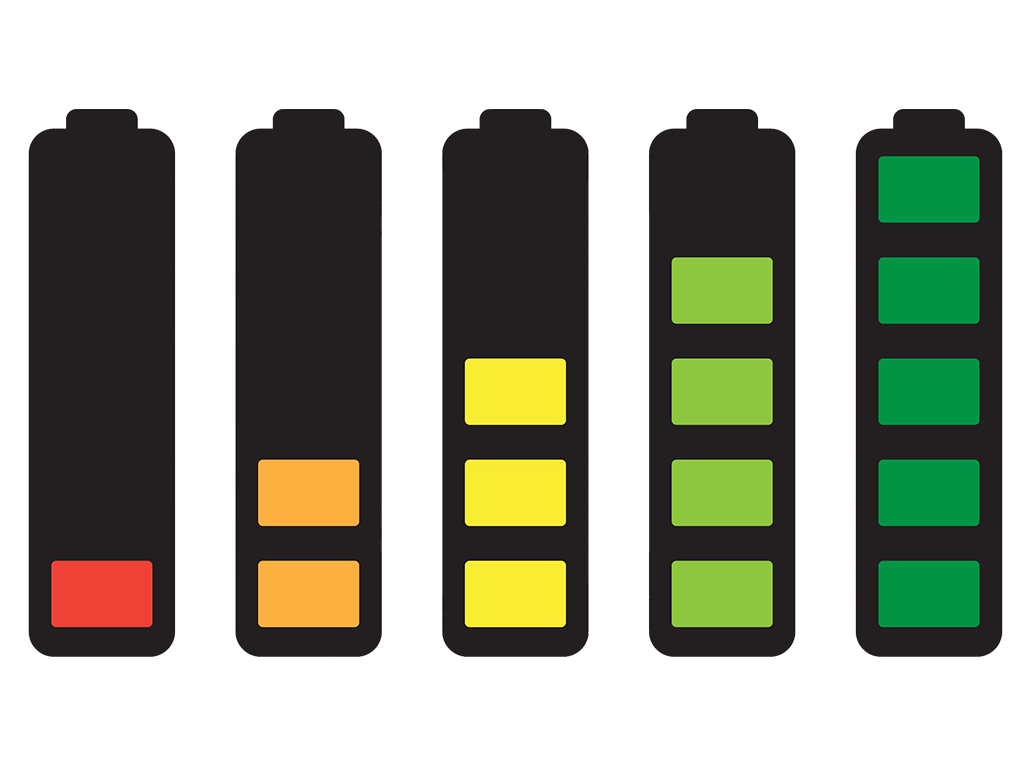
What is BMS?
A battery management system BMS is an electronic system that manages and monitors the performance and health of a rechargeable battery. The battery management system for electric vehicles typically includes hardware and software components that work together to ensure the safe and efficient operation of the battery.
The key functions of a battery management system BMS include monitoring the state of charge (SOC) and state of health (SOH) of the battery, controlling the charging and discharging process, balancing the cells within the battery pack to ensure they all have similar voltage levels, and providing information about the battery’s performance and condition to the user or other systems.
BMSs are commonly used in applications where batteries are used as a power source, such as electric vehicles, renewable energy systems, and portable electronic devices. By managing the battery’s performance and ensuring its safety, BMSs help to extend the battery’s lifespan, increase its efficiency, and reduce the risk of accidents or malfunctions.
How can I maximise the range of my EV?
Practice efficient driving habits: Avoid sudden acceleration and hard braking, and maintain a steady speed. Use coasting and regenerative braking to slow down whenever possible. Electric Vehicles installed with 2G Vehicle Trackers or 4G Vehicle Trackers help in theft protection.
Plan your routes: Use GPS to plan you’re routing to avoid traffic, hills, and other obstacles that may decrease your range.
Minimise use of climate control: Use the climate control system sparingly, as it can consume a significant amount of energy.
Remove unnecessary weight: Remove any unnecessary weight from your vehicle, such as heavy items in the trunk, as this can decrease your range.
Keep your tires properly inflated: Under-inflated tires can increase drag and decrease your range.
Avoid high speeds: High speeds increase wind resistance and can decrease your range. Try to maintain a speed of 60-65 mph on the highway.
Use Eco or Eco+ mode: Many EVs have an Eco or Eco+ mode that can optimise energy consumption and increase your range.
By following these tips, you can maximise the range of your EV and get the most out of your battery.
Can I charge my EV using a regular household outlet?
Yes, you can charge your EV using a regular household outlet, also known as Level 1 charging. However, Level 1 charging is the slowest way to charge an EV battery, and it may not provide enough power for some EV models. The charging speed will depend on the amperage of the outlet and the capacity of your vehicle’s onboard charger.
Most EVs come with a portable Level 1 charging cord that can be plugged into a standard 120-volt household outlet. This method of charging can take anywhere from 8 to 24 hours to fully charge the battery, depending on the size of the battery pack and the charging rate of the EV.
If you plan to use a Level 1 charging method, it is important to ensure that the outlet you use is dedicated to your EV charging and not shared with other household appliances. Additionally, make sure to use a grounded outlet with a circuit breaker that can handle the charging load of your vehicle.
If you want faster charging, you can consider installing a Level 2 charging station at your home, which can provide up to 240 volts and can fully charge most EVs in 4 to 8 hours.
How often should I charge my EV battery?
The frequency of charging your EV battery will depend on your driving needs and the state of charge of your battery. Generally, it is best to charge your EV battery before it drops below 20% to prolong the battery’s lifespan and avoid over-discharging. Additionally, it is recommended to avoid letting your battery drop to 0% frequently, as this can cause damage to the battery.
It is also important to note that charging your EV battery to 100% and leaving it at that state for extended periods of time can cause stress on the battery and may negatively affect its lifespan. Therefore, it is best to unplug your EV from the charging station once the battery is fully charged.
The frequency of charging your EV battery will also depend on your driving patterns and your access to charging stations. If you have access to charging stations throughout the day, you can charge your battery as needed to maintain a desired state of charge. If you do not have access to charging stations throughout the day, you may need to plan you’re charging to ensure that your battery is adequately charged for your daily needs.
How long does it take to charge an EV battery with BMS?
The time it takes to charge an EV battery will depend on the size of the battery management system lithium-ion pack, the charging rate of the charging station or outlet, and the state of charge of the battery. Here are some estimated charging times for different charging levels:
Level 1 charging with BMS: This is the slowest method of charging, using a standard 120-volt household outlet. Level 1 charging can take anywhere from 8 to 24 hours to fully charge an EV battery, depending on the size of the battery pack and the charging rate of the EV.
Level 2 charging with BMS: This is a faster method of charging, using a 240-volt charging station or outlet. Level 2 charging can fully charge most EVs in 4 to 8 hours, depending on the battery size and the charging rate of the EV.
DC fast charging with BMS: This is the fastest method of charging, using a high-powered DC charging station. DC fast charging can charge an EV battery to 80% in as little as 30 minutes, but the charging rate may slow down after that point to protect the battery.
It is important to note that charging times may vary depending on the EV model and charging station used and that charging times can also be affected by environmental factors such as temperature and humidity. Additionally, it is recommended to avoid charging your battery to 100% frequently, as this can cause stress on the battery and may negatively affect its lifespan.
How do I know when my EV battery needs to be replaced?
The lifespan of an EV battery can vary depending on a number of factors, such as the type of battery chemistry, the manufacturer, and the conditions under which the battery is used and maintained. Generally, EV batteries are designed to last for several years installed with a good BMS, with an expected lifespan of around 8 to 10 years or more.
When an EV battery reaches the end of its lifespan, it may exhibit certain symptoms that indicate the need for a replacement. Some of these symptoms include:
Reduced range by BMS: If you notice that your EV is not able to travel as far on a single charge as it used to, or if the range has significantly decreased, this may be a sign that the battery is degrading.
Longer charging times by BMS: If you notice that your EV is taking longer to charge than it used to, or if it is not able to charge to its full capacity, this may be a sign that the battery is degrading.
Increased heat: If you notice that your EV battery is getting hotter than usual during charging or use, this may be a sign that the battery is degrading.
Battery warning lights: If your EV displays warning lights or error messages related to the battery, this may indicate a problem with the battery.
If you notice any of these symptoms, it is recommended to have your EV battery inspected and BMS checked by a certified technician to determine if a replacement is necessary. Additionally, it is important to follow the manufacturer’s recommended maintenance guidelines to prolong the lifespan of your EV battery.
Can I use a public charging station to charge my EV battery?
Yes, you can use a public charging station to charge your EV battery. Public charging stations are typically classified as Level 2 or DC fast charging stations and are often located in public areas such as parking lots, shopping centres, and along highways.
To use a public charging station, you will need to have an account with the charging network or provider and a compatible charging cable. Some charging networks or providers may require a membership or subscription to access their charging stations, while others may offer pay-per-use options.
When using a public charging station, it is important to follow the instructions and safety guidelines provided by the charging network or provider. Additionally, it is important to be aware of the charging time limits and fees associated with the charging station, as some stations may charge fees for extended use or for parking after the charging is complete.
It is also recommended to plan you’re charging ahead of time and to have a backup charging plan in case the charging station is occupied or out of service. Many EV manufacturers offer navigation systems or smartphone apps that can help you locate nearby charging stations and monitor your charging status.
Can I use BMS fast charging to charge my EV battery?
Yes, you can use fast charging, also known as DC fast charging, to charge your EV battery. DC fast charging is a high-powered charging method that can charge an EV battery much faster than Level 1 or Level 2 charging.
DC fast charging with BMS can charge an EV battery to 80% in as little as 30 minutes, depending on the charging station and the EV model. However, it is important to note that fast charging may cause more wear and tear on the battery than slower charging methods. Therefore, it is recommended to use fast charging only when necessary and to avoid using it too frequently.
Additionally, some EV models may have restrictions or limitations on their fast charging capabilities. It is important to consult the manufacturer’s recommendations for charging your EV battery and to follow the BMS battery management system 18650 charging guidelines provided by the charging station or network.
How should I store my EV battery?
If you need to store your EV battery for an extended period of time, there are some steps you can take to ensure that the battery remains healthy and functional. Here are some tips for storing your EV battery:
Charge the battery to around 50% of its capacity before storage: A fully charged or fully discharged battery can degrade over time, so it’s best to charge the battery to around 50% before storing it.
Store the battery in a cool, dry place: Extreme temperatures can damage the battery, so it’s best to store the battery in a cool, dry place, away from direct sunlight.
Disconnect the battery from the vehicle: If possible, disconnect the battery from the vehicle to prevent any parasitic power loss or other electrical issues.
Check the battery periodically: Check the battery periodically to ensure that it is holding its charge and to prevent any damage from occurring.
Charge the battery periodically: It is recommended to charge the battery to around 50% every 3-6 months to keep it healthy and functional.
It is important to note that the specific storage recommendations may vary depending on the type of battery and the manufacturer’s battery management system project recommendations. Therefore, it is recommended to consult the manufacturer’s guidelines for storing your EV battery.
A battery management system BMS can be integrated with the Internet of Things (IoT) and cloud data technologies to improve the efficiency, reliability, and safety of the battery system. Here are some ways in which IoT and cloud data can be used with a BMS:
Remote monitoring: IoT technology can be used to remotely monitor the performance of the BMS battery management system requirements, including the SOC, SOH, and other key parameters. This allows the battery system to be monitored in real time, and any issues can be quickly identified and addressed.
Predictive maintenance: Cloud data analytics can be used to analyse the performance data from the battery system and identify any potential issues before they become major problems. This helps to prevent downtime and reduce maintenance costs.
Performance optimisation: By using cloud data analytics, the BMS can optimise the performance of the battery system, including adjusting the charging and discharging cycles to maximise efficiency and extend the lifespan of the battery.
Energy management: Cloud data analytics can also be used to integrate the battery system with other energy management systems, such as solar panels or grid power, to optimise energy usage and reduce costs.
Overall, the integration of IoT and cloud data with a battery management system can provide a range of benefits, including improved efficiency, reliability, and safety, as well as reduced maintenance costs and improved overall performance.
What are the types of battery management system?
There are various types of battery management systems (BMS) available, depending on the specific application and requirements. Here are some of the common types of BMS:
Centralised BMS: A centralised BMS is a single unit that monitors and controls all battery cells in a system. It is typically used in large-scale applications, such as electric vehicles and grid-scale energy storage systems.
Distributed BMS: A distributed BMS consists of multiple modules that monitor and control a smaller group of battery cells. This type of BMS is commonly used in smaller-scale applications, such as home energy storage systems and small electric vehicles.
Modular BMS: A modular BMS is a flexible system that can be easily expanded or customised based on the specific requirements of the application. It consists of individual modules that can be added or removed as needed.
Active BMS: An active BMS uses active balancing technology to redistribute charge among battery cells. This type of BMS is more efficient and can balance cells faster than passive BMS, but it is also more expensive.
Passive BMS: A passive BMS uses resistors to dissipate excess charge from the battery cells. It is a simpler and more affordable option, but it is not as efficient as active BMS and can take longer to balance cells.
Hybrid BMS: A hybrid BMS combines the benefits of active and passive balancing technologies to optimise battery performance and efficiency.
The type of BMS used depends on the specific application and requirements, such as the size and complexity of the battery system, the desired level of control and monitoring, and the budget.
What does a battery management system do?
A battery management system (BMS) is a technology used to monitor, control, and protect rechargeable batteries. The primary function of a BMS is to ensure that a battery operates safely, efficiently, and reliably throughout its entire life cycle.
Some of the key functions of a BMS include:
Monitoring: The BMS continuously measures various parameters such as voltage, current, temperature, and state of charge (SOC) to track the performance of the battery.
Balancing: If the battery cells are not balanced, the BMS will redistribute the charge from the cells with a higher SOC to the cells with a lower SOC to maintain the overall health of the battery.
Over-voltage and under-voltage protection: The BMS will cut off the charging or discharging of the battery when the voltage exceeds or falls below safe levels to prevent damage to the battery.
Temperature management: The BMS will monitor the temperature of the battery and control the charging or discharging rate to prevent overheating, which can cause damage to the battery or create a safety hazard.
State of Health (SOH) estimation: The BMS will continuously estimate the SOH of the battery and provide information on the remaining useful life of the battery.
Overall, the BMS plays a critical role in ensuring the safe and reliable operation of rechargeable batteries in various applications, such as electric vehicles, renewable energy storage systems, and portable electronics.
Embedded Hardware Manufacturing
[pac_divi_table_of_contents title="Embedded Hardware" spacing_above_heading="100px" _builder_version="4.20.2" _module_preset="default" heading_all_font_size="18px" sticky_position="top" sticky_limit_bottom="section"...




